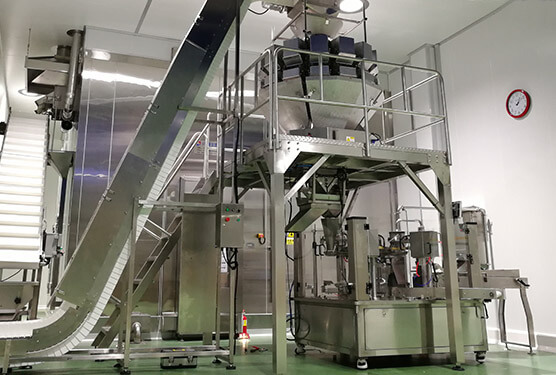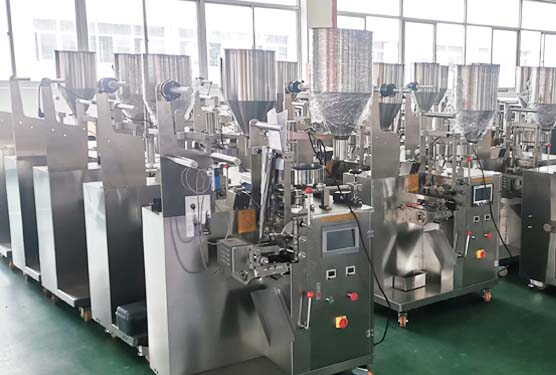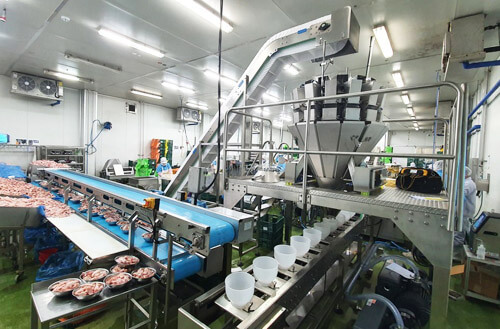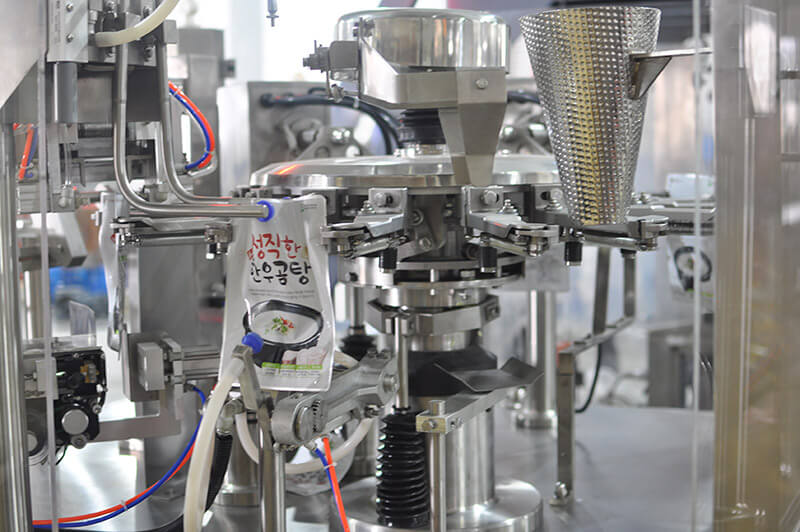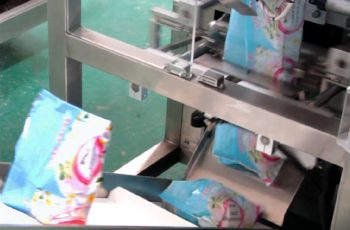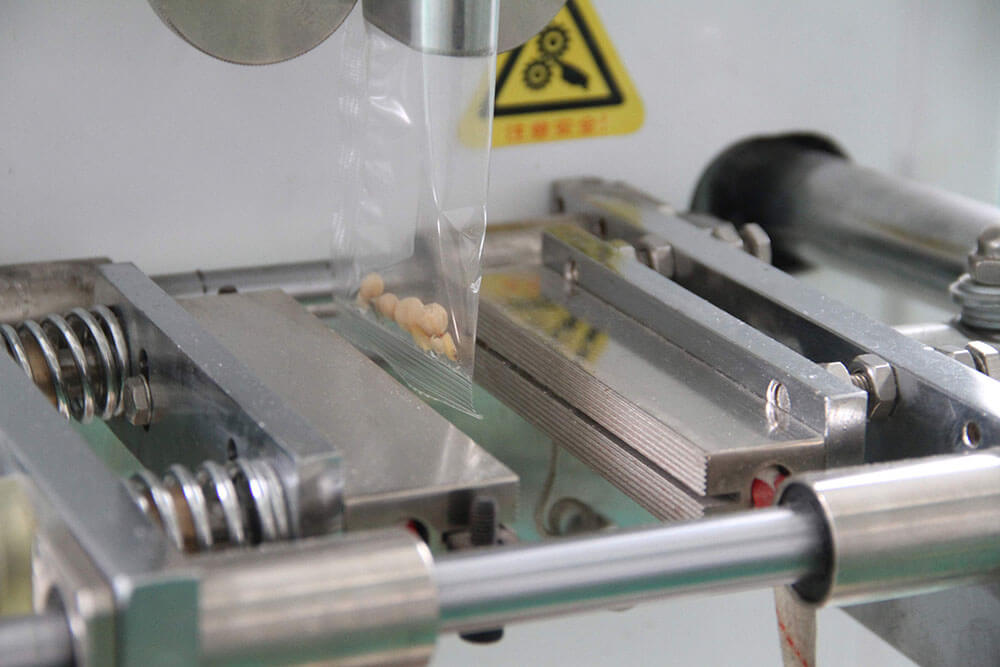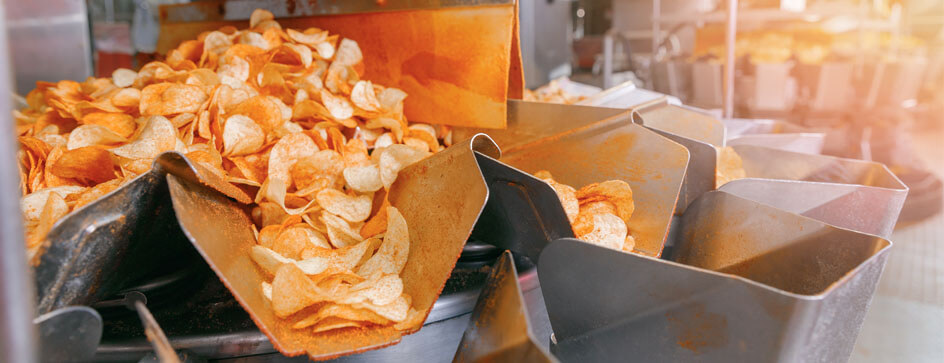Jam is a common food or food ingredient, people buy them in large quantities every year. There are many kinds of jam packages in the market, so what are the features of those jam packages that stand out and are popular among people? In this article, I will give you information about jam packaging and jam packaging machines and other relevant details.
What is Jam Packaging?
There are many types of jam packaging, like glass jars, pouches or buckets are all forms of jam packaging. Jam packaging effectively blocks out a variety of factors such as moisture, air, light and microorganisms. Good jam packaging maintains the aroma and flavor of the product, allowing you to taste the original jam. Therefore, jam packaging has become a growing point of attention for people.
Jam Packaging Key Points
Protection
Protection is naturally one of the first considerations for jam packaging. Like many other packages, they should be resistant to moisture, block microorganisms, and so on. Packaging forms such as jam pouches and jam tins can ensure that the jam product remains intact during transportation.
Durability
Durability is an important feature of jam packaging, whether it is disposable stick packs or reusable cans, buckets and bottles. This is often a key consideration for consumers, and durable packaging makes them buy again.
Attractive Appearance
Some jam packages can be equipped with vivid colors and beautiful patterns, or with a layer of uniquely designed film on the outside of the package. These measures can immediately catch the customer’s eye, good for shelf display, and increase your desire to buy. Glass containers also allow you to see the jam inside the container. It can be a good way to show the color and texture of the jam and make your product look more attractive.
Clear Product Information
Clear product information saves consumers a lot of trouble, you don’t need to spend a few minutes just to find the product information. With clear product information, you can see the information you want in just several seconds. Jam packages should have a clear production date, expiration date, product ingredients and all other necessary information.
Shelf Life
Jam packaging should effectively protect the product from moisture, air, microorganisms, and other factors. Thus extending the product shelf life and preserving its flavor, color, and aroma.
Types of Jam Packaging
Pouch
Pouches are a form of flexible packaging that can be designed in different sizes and types. They are lightweight, convenient and versatile, can come with a nozzle and a handle, etc., and are usually resealable. They are suitable for jams of low consistency, because it is easy to squeeze out.

Stick Packaging
Stick packs have the shape of a long, narrow cylinder. They are small and lightweight, usually have a small capacity and are generally used for single-use jams. You can put them directly into your bag or pocket, which is very convenient.

Plastic Buckets
The plastic bucket has a large capacity, a handle and a lid. Used in places where large quantities of jam are required, like restaurants, bakeries and schools. Plastic buckets are durable and the material is lightweight that saves on transportation costs.

Glass Jars
Glass jars are the most popular jam packaging. They have a high degree of transparency, a narrow neck and an aluminum lid. Glass jars can effectively block moisture, air and other environmental factors. You can clearly see the color and texture of the product in the jar, which is great for shelf display and has a strong appeal. Some of the jam glass jars come in a box, which is very beautiful and adds a touch of class, making it suitable as a gift!
What’s more, glass is an inert material and has high chemical stability that will not react with the components of jam. Its durability is also reflected in the fact that when you are done with the jam in it, you can easily wash it and dry it and then reuse it. You can reuse it as a container to store sugar or salt. And when you really don’t want it anymore, you can recycle it; the glass is very easy to recycle. But glass jars also have some drawbacks, they are fragile and the material is heavy, increasing the risk and cost of transportation.

Metal Cans
Metal cans are usually made of aluminum. The great durability and long shelf life are their unique features. It provides strong protection from light, moisture, and air. Aluminum is lighter than glass and some other metals, and is sturdy and durable, less likely to break, which reduces transportation risks and costs. It is also reusable and recyclable like glass jars. Although it is stronger than glass jars, it is not as attractive as glass jars. One of the main reasons for this is that it is opaque, so you cannot see the color and texture of the jam in the metal jar, which reduces your desire to buy it. Of course, metal cans also don’t look as good as glass jars.

Tubes
The tubes have controlled dispensation and are easy to squeeze, so you can better control the amount you need. They are very convenient to use and can be resealed with a screw cap. Very practical.

Blister Packs
Blister packs are flexible and transparent plastic packages with a thin layer of aluminum on them. They are often seen in restaurants or hotels, and are used to package single-serving jams.

Squeeze Bottles
Squeeze bottles are usually made of plastic with a squeezable body that allows for good portion control of jam by squeezing. Often equipped with a flip-top or screw cap, and a nozzle. Suitable for home and restaurant use.

Types of Jam Packaging Machine
According to the Degree of Automation
- Automatic Jam Packaging Machine: The machine is fully automatic and is known for its high accuracy and fast packing speed. From jam weighing, filling, sealing, labeling, etc. to unloading the container are all handled automatically. Packing jam into various containers. And it is equipped with an easy-to-operate control panel, you can adjust the relevant factors easily. Suitable for companies that require mass production.
- Semi-Automatic Jam Packaging Machine: This machine is a combination of manual and automated operation. The jam is manually loaded into the hopper, when the operator steps on the foot pedal, the machine starts to dispense the jam into the containers. When the containers are filled with the required amount, the machine automatically stops and the operator unloads the filled jam containers. Although it is not as productive as a fully automated jam filling machine, it is more flexible and allows the operator to make more manual interventions and adjustments during the packaging process. Suitable for small to medium-sized production.
- Manual Jam Packaging Machine: A manual jam packaging machine requires manual operation at various stages, such as filling, sealing, and labeling. Its advantage is that it is inexpensive. Suitable for small-scale production enterprises.

According to the Type of Packaging
- Jam Pre-made Pouch Packaging Machine: Used to fill jam into pre-made bags and then seal them. Usually equipped with advanced sensors and control systems.
- Jam Stick Packaging Machine: The film is passed through a forming collar or tube to form a continuous tube. Then filled. The filled tube is then sealed horizontally at regular intervals and then cut into individual stick packs. It is flexible. It can fill multiple stick packs at the same time.
- Jam Blister Packaging Machine: This machine packs jams in blister packs. The machine begins by drawing a flat plastic film from a roller and forming it into a blister by heating it. After the blisters are formed, jam is filled into these blisters, and a strong layer of aluminum foil is laid over the filled blisters, which are then sealed tightly. After they are sealed, the blisters are discharged by conveyor after they are cut.
- Jam Tube Filling Machine: A jam tube filling machine is a machine designed to fill jam into tubes. The tube can be made from a variety of materials including plastic, laminate or aluminum. Automatically feeds empty tubes into the machine, the jam is accurately filled into the tubes, then sealed, coded and printed.
- Jar Filling Machine: Use pistons or peristaltic pumps to fill glass or plastic jars accurately.
According to Design
- Inline Jam Packaging Machine: The inline jam packaging machine packs jam linearly and is flexible in its configuration, it can be integrated with other machines and you can customize the layout or even add stations according to your production needs. Fit different container sizes and packaging forms.

- Rotary Jam Packaging Machine: Rotary jam packaging machines are known for their circular packaging stations. They produce at high speeds and run consistently, facilitating continuous production, helping to improve overall efficiency and minimizing downtime between production cycles. Suitable for companies requiring mass production. This Machine is more complex than an inline jam packaging machine.

Conclusion
This jam packaging guide will help you to choose jam packaging and jam packaging machines better, understand the types of jam packaging, and then choose the right packaging machine according to your packaging type. An excellent jam packaging should not only effectively protect your product, but also should have a strong appeal to consumers.

